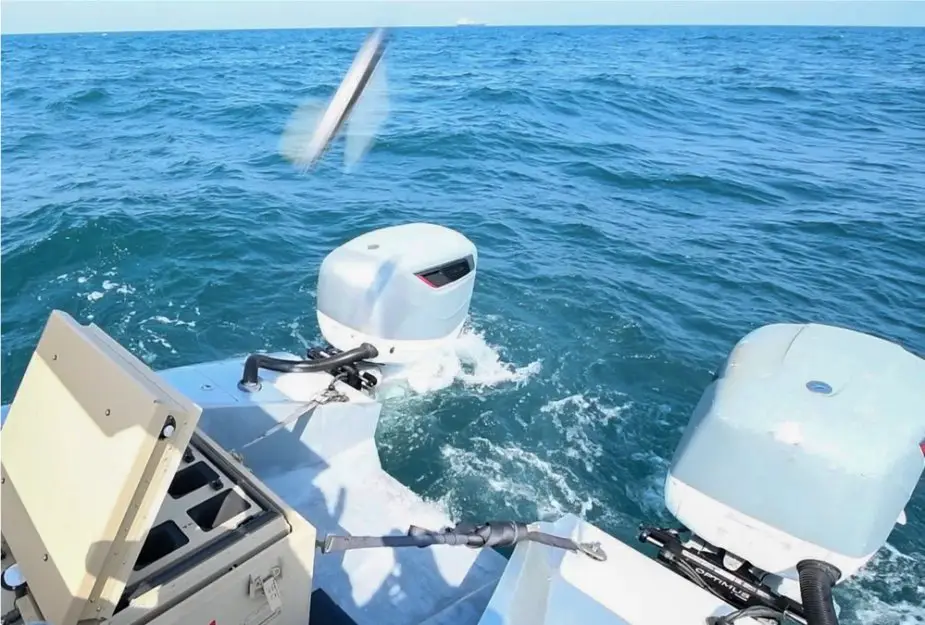Breaking news
US Navy's Martac T38 Devil Ray USV conducts live fire exercises.
According to information published by the US DoD on November 2, 2023, the U.S. Naval Forces Central Command (NAVCENT) has escalated the potency and combat readiness of unmanned surface vehicles (USVs) through live-fire exercises held in the international waters around the Arabian Peninsula on October 23.
Follow Navy Recognition on Google News at this link
 A Lethal Miniature Aerial Missile System launches munitions from a MARTAC T-38 Devil Ray USV. (Picture source: Dvids)
A Lethal Miniature Aerial Missile System launches munitions from a MARTAC T-38 Devil Ray USV. (Picture source: Dvids)
These exercises, marking the inaugural deployment of lethal munitions from USVs in the Middle East, were a component of Exercise Digital Talon. NAVCENT's Task Force 59, a pioneer in Unmanned and Artificial Intelligence operations within the Navy, showcased the ability of unmanned platforms to seamlessly operate alongside manned vessels. This “manned-unmanned teaming” involved the detection and engagement of simulated enemy forces at sea, represented by a target boat.
Armed with a Lethal Miniature Aerial Missile System, a MARTAC T38 Devil Ray USV achieved direct hits on the target during several firing events. The engagement decisions were made by a remote human operator stationed at Task Force 59's Robotics Operations Center.
Vice Adm. Brad Cooper, NAVCENT commander, noted that this is the second time in recent months the U.S. Navy has executed advanced unmanned system operations in the area. Preceding this event, in September, the U.S. Navy tracked Iranian maritime forces with various unmanned vehicles during patrols around the Strait of Hormuz.
Vice Adm. Cooper emphasized the strategic shift towards utilizing new unmanned systems and artificial intelligence to enhance operational capabilities beyond traditional maritime surveillance.
Looking to the future, Vice Adm. Cooper anticipates further expansion in the scope and impact of these unmanned capabilities, including exercises that will incorporate a broader array of combat-ready unmanned systems.
MARTAC T38 Devil Ray USV
The T38 USV is a compact unmanned surface vessel measuring 11 meters (38 feet) in length, 3.4 meters (11 feet) in width, and 1.01 meters (40 inches) in height. It has a draft of 0.46 meters (18 inches) and a maximum craft weight, including one set of batteries, of 3084 kilograms (6800 pounds).
This USV is capable of carrying a maximum payload of 2041 kilograms (4500 pounds), but exceeding this limit can result in performance degradation. The T38 USV has a burst speed of 80 knots, making it suitable for rapid deployment or response.
It offers a cruise speed range of 35 to 60 knots for more controlled operations. It also has a cruising range of 500 to 750 nautical miles, allowing it to handle long-duration missions.



























